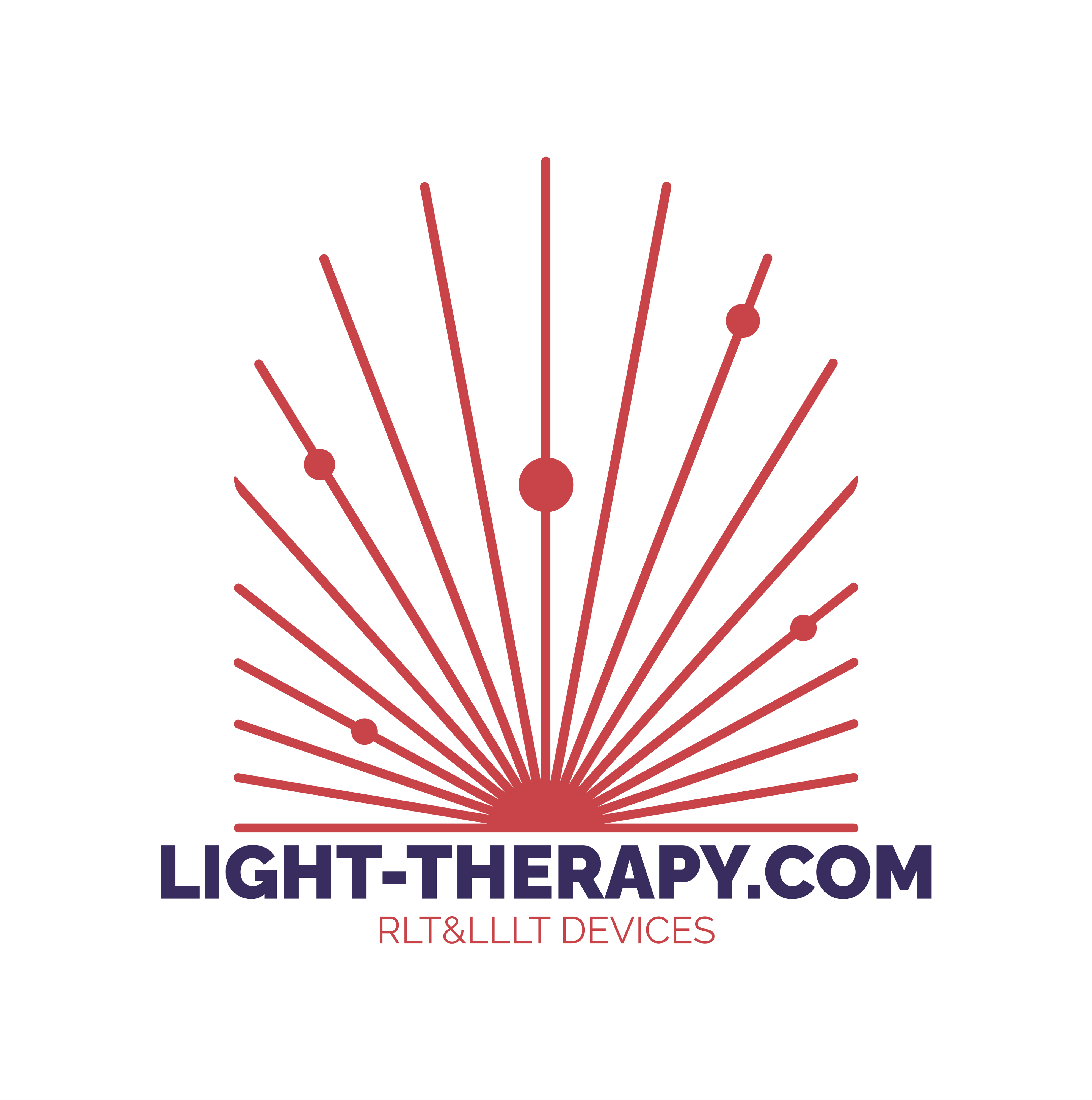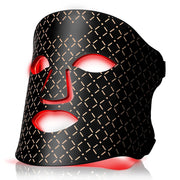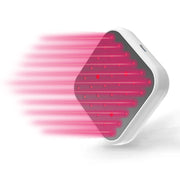From a biological perspective, testosterone is what makes a man a man. But women produce the hormone too, and it’s an important element of overall health for both sexes.
Testosterone production increases during puberty and then begins to decline around the age of 30. A gradual decline is a normal part of aging, but this decline can bring about some unwanted side effects, especially if testosterone levels drop abnormally. Using red light therapy for testosterone could be a way to support your body in restoring normal testosterone levels, and in the process, getting your zest and vitality back.
Why You May Want to Increase Your Testosterone
Testosterone is the primary sex hormone that’s responsible for men’s ability to perform sexually and to reproduce. Its secondary effects on men include deeper voices, facial hair, and denser, more pronounced muscle and bone mass.
Low testosterone can interfere with primary sexual functioning as well as secondary characteristics, all of which can lead to psychological distress.
In women, testosterone is a necessary component of well-being, contributing to bone health, reproductive health, mental focus, and physical energy. Women produce small amounts of testosterone in the ovaries, adrenal glands, fat cells, and skin cells.
As with men, women can suffer from the effects of low testosterone. While it’s not as commonly talked about, it can nevertheless be problematic for women.
The American Urology Association acknowledges that a gradual decline in testosterone production is a normal part of aging. The group says, however, that about two out of every 100 men have abnormally low testosterone (known as Low T).
Even if you haven’t been diagnosed with Low T, you may wish to increase your body’s natural ability to produce testosterone if you’re having troubles with:
- Reduced muscle mass and weight gain (particularly excess belly fat);
- Low energy levels, diminished strength, poor endurance, and poor physical performance;
- Low sex drive and poor sexual satisfaction;
- Reduced bone mass, which can lead to osteoporosis and increased risk of fractures;
- Erectile dysfunction;
- Insomnia and sleep apnea, leading to increased daytime fatigue;
- Mood swings, irritability, and depression;
- Lack of mental focus/brain fog;
- Hot flashes: Low T is one cause of hot flashes in men with andropause (male menopause);
- Infertility: Low T can lead to testicular shrinkage and increased softness of the scrotum, both of which could be an indication of reduced sperm counts.
Low testosterone could be a contributing factor in these symptoms, but other factors are often involved as well. Many could have causes other than Low T, such as stress, poor lifestyle habits, and chronic underlying conditions. Therefore, it’s important to consult a doctor before trying to increase your testosterone levels on your own.
If your symptoms are mild, you may not feel the need to do anything about it right now. But if you’ve been feeling older than your years, you don’t have the sex drive you once had, and you lack your former energy levels, there are ways to boost testosterone naturally and safely.
Red Light Therapy for Testosterone
Research suggests that there is a direct correlation between natural sunlight exposure and the body’s ability to produce testosterone. Humans are highly responsive to light, and increasing exposure to light has proved to spark positive biological processes in the body.
The key is using the right types of light.
Natural bright light therapy from sunlight has been used for centuries to treat a wide variety of physical and psychological ailments. Today, bright light may be delivered via artificial full-spectrum lights.
Bright light therapy is often used to treat seasonal depression, which is known as seasonal affective depressive disorder (SADD), as well as chronic (non-seasonal) depression, postpartum depression, acne, and other chronic skin conditions, pain, and as an immune system booster.
According to the European College of Neuropsychopharmacology, low libido affects nearly 25 percent of men over age 40. During a 2016 study by the group, exposure to bright light increased sexual desire and satisfaction, as well as testosterone levels. Research had previously discovered seasonal fluctuations in libido, which prompted this study.
The challenge with natural sunlight or full-spectrum bright light devices is that in addition to beneficial wavelengths of light, the sun also emits harmful ultraviolet (UV) light that is known to cause premature aging of the skin, as well as skin cancer.
Blue light has been successfully used to treat acne since it is known to kill acne-causing bacteria on the skin — but blue light has also been linked to a serious eye disorder – macular degeneration. So, the challenge is to isolate the beneficial wavelengths of light to receive the benefits of light therapy without the adverse effects.
This is where red light therapy comes in. Technological advances now let us enjoy the benefits of red light via safe, economical, and easy-to-use LED devices.
Red light therapy uses isolated wavelengths of light, specifically red, which ranges from 630 to 660 nanometers (nm); and near-infrared (NIR), which ranges from 810 to 850 nm.
These wavelengths have been widely studied in conjunction with a variety of human health conditions. Although human clinical studies on the direct effects of red and NIR light wavelengths on testosterone are still in the early stages, the benefits of the therapy on both the male and female reproductive systems hold promise in its use in boosting testosterone levels.
Also called low-level light therapy (LLLT) or photobiomodulation (PBM), red light therapy wavelengths fall within what is known as the “therapeutic window” of light.
How Red Light Therapy Can Naturally Boost Testosterone
There are several mechanisms by which red light therapy can support your body in naturally boosting testosterone levels and potentially reversing testosterone abnormalities.
A 2013 study by researchers from Korea involved stimulating increased production of testosterone in male rats after treating them with a combination of red and NIR light, suggesting that red light could be an alternative treatment modality to conventional testosterone replacement therapy — which, even though it’s effective, can carry many unwanted side effects.
Here’s how red light therapy works to treat testosterone problems.
Increased Energy Production in the Cells
In men, red light stimulates energy production in the Leydig cells, which are the cells responsible for producing testosterone. Enhanced energy production in Leydig cells is believed to help naturally increase testosterone production and restore age-appropriate (or better) testosterone levels.
It’s not just the Leydig cells that benefit from increased energy production. Red light therapy has numerous benefits, the most important being the positive interaction between light photons and the mitochondria, which are the energy centers within cells.
But why is it important to boost cellular energy? Here’s where things get interesting because treating the cause of low cellular energy could potentially hold the answer to reversing Low T.
The mitochondria’s job is to convert raw materials into adenosine triphosphate (ATP), which is the primary fuel for all the cells in the body. When cells are energized, they function optimally, repair themselves, and replicate.

But when mitochondria aren’t able to produce ATP (known as mitochondrial dysfunction), the cells suffer — and low-energy cells can’t do their jobs properly. In the case of the Leydig cells, if they don’t have enough energy, they may prioritize survival over their specialized functions.
Therefore, reversing mitochondrial dysfunction could hold the answer to many chronic health problems, including Low T.
A study published in a 2019 issue of Review of Optometry found that red light may have therapeutic value and even reverse the damage of mitochondrial function. Although this study was focused on eye care, the researchers’ discovery about red light and mitochondrial function was profound.
During an older University of California San Diego study (published in 2008), researchers confirmed that treatment with red and NIR light increased ATP production by mitochondria. In addition, the treatment positively influenced cellular homeostasis (optimal functioning under normal circumstances), as well as cell proliferation.
What this means for you: red light therapy (which includes both red and NIR wavelengths) can work from the inside-out, on a cellular level, to boost cellular performance. This could potentially have a ripple effect that normalizes the production of sex hormones, including testosterone.









